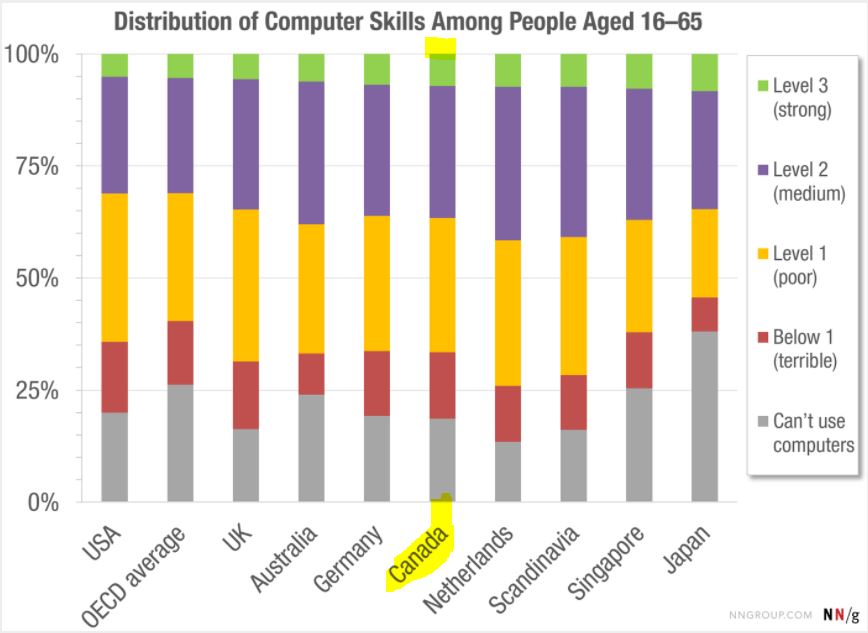| The perils of presenting last; you’ve got other things on your mind instead of what you planned to present, but it helped! |
By the time I got to my presentation in the last slot on Friday I was brain full, exhausted and not entirely sure I would be coherent. After a rambling review of what got me to the DIY lab concept I finally got rolling on the building and operation of your own classroom computer lab. I hadn’t intended to, but a moment from my time as a high school dropout was on my mind as I began the presentation. Vocalizing the story helped connect several ideas that explained where the DIY technology idea came from.
Being handy I ended up working at a Canadian Tire for a couple of months as the tire change guy before I started apprenticing as a millwright. One day early on I was watching one of the mechanics diagnosing a Renault Fuego. As he moved around under this unfamiliar car he burned his arm on the exhaust pipe. In a fit of rage he threw his spanner across the shop and then stormed off, shouting that he was going to make the customer buy a new exhaust system (the car was in with carburetor issues). The customer, having no idea what happens under the hood of her car, reluctantly accepted the ‘fact’ that she needed a very expensive exhaust system replacement. This moment stayed with me because it not only taught me what ignorance can cost you, but also made me question the veracity of ‘professionals’.
This doesn’t mean I’m an expert at everything, but I always have a look under the hood and grasp the basics before I use a technology, whether it’s smartphones, the internet or a motorcycle. Since cars became dependable enough the vast majority of the public have lost any interest in their inner workings, but that wasn’t always the case. Early adopters of automobiles were their own mechanics. The maker movement is a step back towards that kind of technical familiarity, but it takes a special breed to maintain that level of curiosity and ownership of knowledge.
The difference between digital technology and automotive technology is that the digital stuff insinuates itself into your relationships and becomes a 24/7 part of your life. It affects your thinking rather than your muscles. Not knowing how a car works might occasionally inconvenience you and cost some money, but not understanding digital technology when you spend hours a day socializing through it or (worse) teaching with it, is a disaster waiting to happen. It isn’t a disaster for tech driven multinationals who live off your data though. They will happily convert your and your students’ ignorance into profit.
I’m in the strange situation of teaching the technology that the vast majority of Canadians use but no one wants to understand. A general understanding of how digital technology works is vital if you’re going to have it participating in your life all day every day, and especially if you’re going to teach and learn with it. You don’t need to be an expert, but you do need to have some conception of how this potentially invasive thing works.
| ICTC posts Canadian statistics in digital technology jobs each month. Yet Geography is a mandatory course while computer technology is an afterthought. |
I look at Ontario curriculum and fail to understand how digital technological literacy isn’t a fundamental requirement. The vast majority of Canada’s population uses personal, digital technology and in many cases that use is almost continuous, yet very few people understand how it works.
We’re graduating students into a millennial unemployment rate of over 14%, but it drops to 6% if they are information-communication technology focused. Even if they aren’t specializing in technology, every graduate we produce is going to use ICT/computers in their job in some capacity or another.
The DIY lab I presented might be a bridge too far for many teachers, but for digital technology teachers or anyone whose curriculum depends implicitly on digital technologies (business tech, media arts) I think it should be a requirement. The teachers presenting this technology to their students owe it to them to develop a deeper understanding of the tools they are using. For everyone else (teachers and students), an understanding of what’s under the hood should be an essential requirement otherwise they are teaching and learning in ignorance, which isn’t helping anyone.
It turns out that walking in to the presentation unfocused allowed me to laterally connect a lot of the foundational ideas around this do-it-yourself philosophy of educational technology use.
from Blogger http://ift.tt/2eQBblw
via IFTTT
In 2017 not much has changed: The Digital Divide is Deep & Wide…

